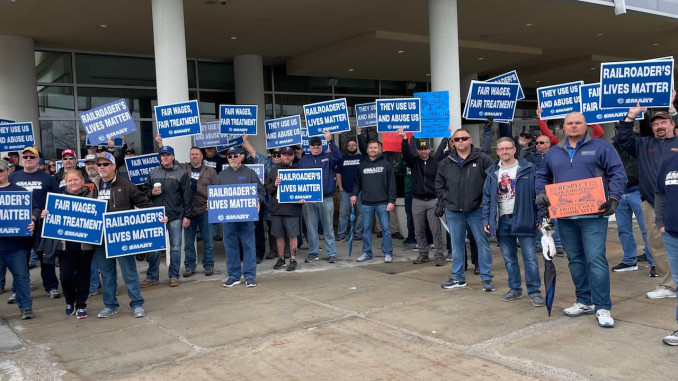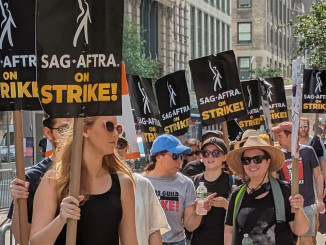
Freight railroad workers have been on the brink of striking for months. On September 14, at the 11th hour, it was announced that a rail strike was called off, and rail companies and union negotiators reached a tentative agreement. President Biden, who was present during the final negotiations, has tried to paint himself as a hero for stopping the strike. And now workers have to decide whether they will accept the agreement that has been proposed or continue to hold out for something better.
Regardless of the outcome, these rail negotiations have already served as an important lesson for all workers. The negotiations have exposed the collaboration between the government and the rail companies, as well as some high-level union officials who operate behind closed doors, out of sight of rank-and-file workers.
The attempts by Democrats and Republicans to intervene in these negotiations have all been aimed at the same thing: stopping a strike. They have tried to push through contract agreements that protect the rail companies, and have sought to divide rail workers by trying to work out separate deals with different unions. And the whole time, Biden, as well as Democrats and Republicans in Congress, has openly warned that the government would impose a contract settlement in order to block a strike. Both parties blatantly defend the rail companies against the workers.
Clearly, the rail companies aim to boost their profits at the workers’ expense. This is business as usual. They don’t care about the workers’ health, safety, or time with their families. And the government backs them up. So, it’s up to the workers to defend themselves.
These negotiations have also shown that railroad workers hold tremendous power. Across the country, about 115,000 rail workers operate an industry vital to the whole economy. If they decided to coordinate their efforts and organize a strike, rail companies would lose over $8 billion per day. But more importantly, rail workers would significantly disrupt the economy. This could be an example to workers across the country, a demonstration of the power that the working class can unleash when it can unite its forces.
In the end, this is the main reason why the rail companies and the government do not want a strike. More than the money that could be lost, more than Biden’s low approval ratings, they do not want workers across the country to see the power that we have when we organize.
Other workers can relate to many of the grievances that rail workers have: sick days, staffing, time off, safety, scheduling. Rail companies have cut the workforce by 30% in the last six years, running the trains with dangerous understaffing. Workers have no official days off for medical visits, and are forced to be on-call 24/7. Workers often work over 80 hours per week, and can be away from home over 100 hours at a time. If workers call in sick for any reason, they can face major discipline, and their jobs can be threatened.
On September 14, when negotiators announced that a tentative agreement was reached, calling off the strike, workers were told the new proposal addressed their demands. But once they finally were able to read the fine print, things turned out to be a little different.
In the end, the proposed wage increase is only about 5% per year for five years (not much, considering inflation). The rail companies are only offering one additional paid day off per year, and three medical visits per year. And the visits must be scheduled at least 30 days in advance and must happen on a Tuesday, Wednesday, or Thursday, as if the need to see a doctor can be set a month ahead. And next to nothing has been proposed about the insane work schedule or low staffing.
Rank and file workers must still vote on this proposal. They could reject it and choose to go on strike. If they do decide to unite and stand up to all this pressure, it could be a huge demonstration of workers’ power, and could serve as an example to millions of workers across the country of the enormous power of the working class that can be unleashed.




